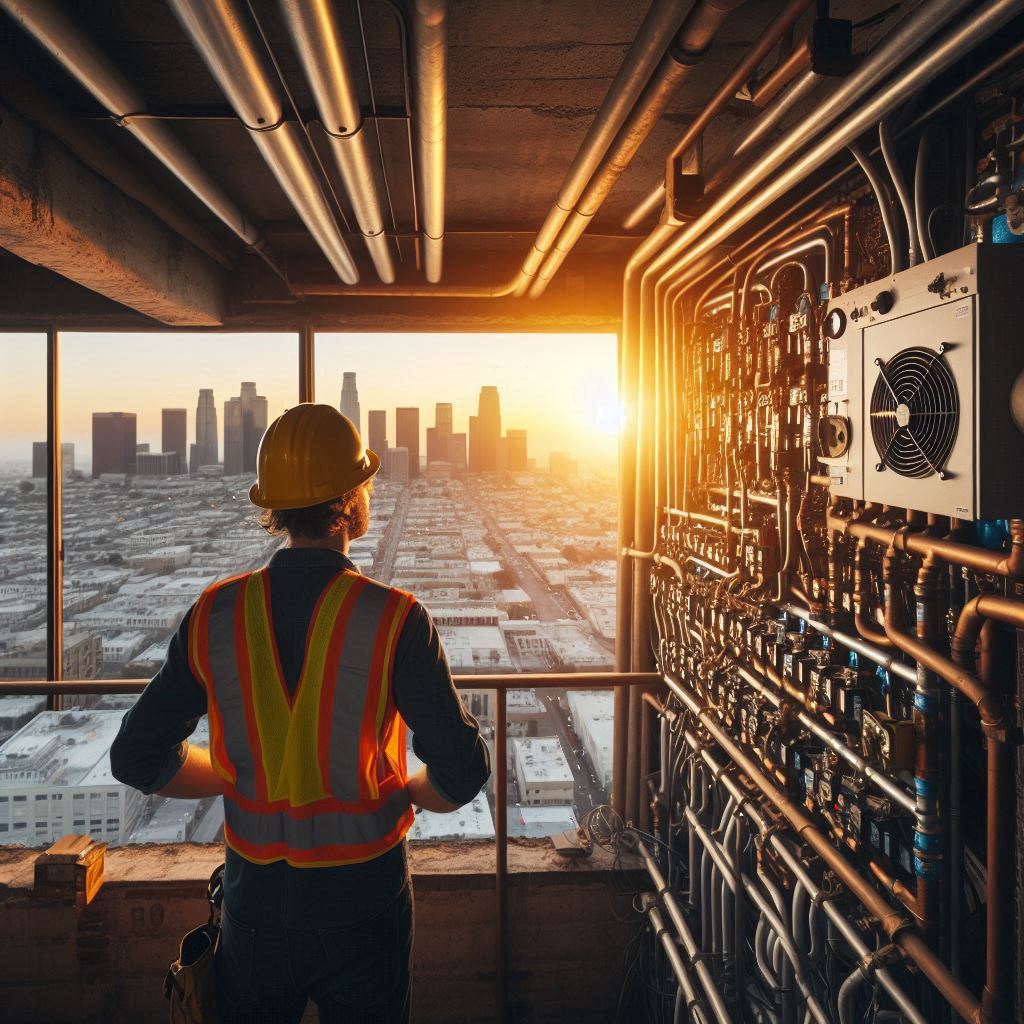In the sprawling metropolis of Los Angeles, a revolutionary initiative is reshaping the urban landscape. The Energy and Water Efficiency Program (EWE Program) targets the vast array of existing buildings with an ambitious goal: transforming them into paragons of sustainability. This initiative is not merely a regulatory requirement; it’s a pivotal move towards reducing the city’s environmental footprint significantly. By focusing on enhancing building energy efficiency and integrating water conservation strategies, LA is setting a benchmark for cities worldwide.
Unpacking the Energy and Water Efficiency Program

Los Angeles’s EWE Program is a comprehensive effort designed to tackle the inefficiencies in older building infrastructures which are often overlooked yet are significant contributors to environmental degradation. This program mandates that commercial and residential buildings adhere to stringent energy and water efficiency standards through rigorous assessments and retrofits.
Core Elements of the EWE Program
The EWE Program aligns with broader state and national objectives aimed at sustainability and conservation. Its structure is detailed, focusing on several crucial areas:
- Building Energy Efficiency Standards: These standards are crucial as they ensure that all buildings contribute positively towards the overarching goal of reduced energy consumption. The standards are aligned with the most current practices and innovations in energy efficiency. Buildings must undergo periodic audits to ensure compliance, encouraging continuous improvement and adherence to best practices.
- Water Conservation Program: Given California’s challenges with drought and water scarcity, the EWE Program places a strong emphasis on reducing water usage. This component of the program necessitates the installation of water-efficient fixtures and the adoption of smarter water management practices. It’s a critical step for sustainable water use in a state where water conservation is essential for ecological balance.
- Building Energy Compliance: Compliance is ensured through a systematic process where buildings are periodically inspected and assessed based on their energy and water usage. This rigorous compliance mechanism helps maintain high standards and encourages building owners to keep their properties up-to-date with the latest efficiency technologies.
- Retrofitting Buildings: Retrofitting is at the heart of the program, especially for older buildings that were not originally designed with energy efficiency in mind. The city provides support and sometimes incentives for building owners to undertake necessary modifications, which might include upgrading HVAC systems, improving insulation, and installing energy-efficient lighting.
- Sustainable Building Practices: Beyond retrofitting, the program promotes sustainable practices in the daily operation and maintenance of buildings. This ongoing commitment to sustainability helps to instill a culture of conservation across the city’s built environment.
Detailed Look at Retrofitting and Compliance Processes
Retrofitting buildings involves several steps, each tailored to address specific inefficiencies. For example, older buildings might replace traditional incandescent bulbs with LED lighting, which uses at least 75% less energy. Similarly, HVAC systems are upgraded to more efficient models that provide the same comfort levels but with significantly reduced energy consumption.
Compliance is monitored through detailed energy audits conducted by certified professionals. These audits assess a building’s energy and water usage, comparing them against the baseline standards set by the EWE Program. Building owners receive reports that not only outline their performance but also suggest areas for improvement. This process is crucial for keeping the program’s goals on track and ensuring that every building contributes to the city’s sustainability objectives.
Transformative Impacts of the EWE Program
The benefits of the EWE Program extend beyond mere compliance. They touch various aspects of urban living, from environmental to economic spheres.
Environmental and Health Benefits
By reducing energy consumption, the program significantly lowers greenhouse gas emissions. This reduction plays a critical role in mitigating urban heat island effects and contributes to overall better air quality. Water conservation efforts help maintain the city’s water reserves, ensuring there is enough to go around even in times of drought. These environmental benefits are crucial for creating a healthier, more sustainable living environment for all Angelenos.
Economic and Social Advantages
Economically, the program offers substantial benefits. Reduced utility costs mean that building owners can save money in the long run, offsetting the initial costs of retrofits. In addition, properties that meet high environmental standards often enjoy higher market values and are more attractive to renters and buyers concerned about sustainability and utility costs.
Socially, the program promotes equity by ensuring all segments of the city move towards sustainability goals. This inclusive approach helps build community awareness and participation in environmental stewardship.
Challenges and Future Directions

Despite its successes, the EWE Program faces challenges, particularly regarding the initial costs associated with retrofitting older buildings and the complexity of staying compliant with evolving standards. However, these challenges offer opportunities for innovation and development in the sector of sustainable building technologies and practices.
Future directions for the program include expanding its reach, refining compliance mechanisms, and increasing incentives for early and over-compliance. As technology evolves, so too will the program, incorporating new standards and practices that continue to push the boundaries of what is achievable in urban sustainability.
For further reading on sustainable building practices and retrofitting, resources such as the U.S. Green Building Council and Energy Star offer extensive information and guidelines that complement the objectives of the EWE Program.
In conclusion, the Energy and Water Efficiency Program of Los Angeles exemplifies how targeted initiatives can transform an urban landscape. With each building that improves its efficiency, the city takes another step towards becoming a model of sustainability, not just for today but for future generations.
VertPro.com serves as a resourceful platform for property owners and managers seeking to enhance their buildings’ energy efficiency. The site offers a range of services, including Commercial Energy Audits, Benchmark Compliance consultancy, and a Construction Marketplace. At the heart of VertPro® is a suite of SaaS technology-based solutions designed to assist in navigating the complexities of Energy Benchmarking and Energy Audits/RCx Plus, while ensuring adherence to over 60 Energy Benchmarking and Energy Efficiency Laws across the country.
For those looking to improve their property’s energy usage and operational value, VertPro.com provides a diverse array of tools and information. The site aims to facilitate a better understanding of energy efficiency practices and legislation, helping building owners and property managers make informed decisions about their energy strategies while complying with all energy ordinances and laws.

